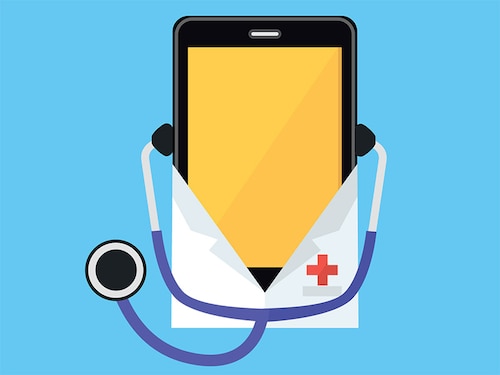How mobile will transform primary healthcare access in India
More than 330 million smartphone users and rapidly falling bandwidth prices are redefining how essential services are delivered in India


A few days ago, we came across a case where a mother wanted to consult a pediatrician. Under a few minutes, she was able to have an online consultation with one of the top pediatricians in Bangalore, who immediately prescribed the required treatment for her child as the symptoms were severe. At this point, the patient informed the doctor that she was on a moving train and travelling towards Bangalore but needed the assistance urgently and was glad to have spoken to him. The doctor, meanwhile, was totally taken aback. Recovering quickly from the initial shock, he felt a deep appreciation for technology and its ability to empower people and help them access essential services at the hour of need. More than 330 million smartphone users and rapidly falling bandwidth prices are redefining how essential services are delivered in India. There would be 900 million smartphone subscribers by 2023 and smartphone traffic is expected to grow 11 times to 14 EB in another five years*. India also has one of the lowest Internet data rates in the world, as low as Rs 10 (approx 6 US cents) /1GB/day. While much has been talked about India as an ecommerce market, adoption of mobile internet for foundational services like education, healthcare and financial services and across different consumer segments is something new and fast catching up. India has one doctor for every 1,700 people, and if one considers only post-graduates, this ratio is pretty dismal at one doctor for every 5,000 people. Access to health services in India is highly inequitable, translating into major disparities in health outcomes along demographic lines. There are 1,000 primary healthcare cases and about 100 secondary healthcare cases reported in a hospital everyday and this number is rising. Spread of chronic and lifestyle diseases is growing at an alarming pace and much of it will end up in tertiary care if not managed and intervened at appropriate time. Focusing on primary and secondary care is important in our country as it pushes a prevention mindset and helps people manage their health spends better. However, we can not depend on physical channels alone for primary care delivery as it is very expensive and also slow to scale. Physical infrastructure both in cities and in rural areas is proving to be an impediment and isn't able to catch up fast enough, adding to massive delays in patient getting to the point of care. Technology is the only viable solution to be able to cope with low doctor-patient ratio, predominantly out-of-pocket spending and inaccessibility of quality care. We are going to see India leapfrog the methods of healthcare delivery that were adopted in the developed nations, and mobile will be at the centre of this disruption. Let us look at some of the areas where mobile will transform the delivery of primary and secondary healthcare.
Speed means quality
Because in healthcare, early detection and timely intervention helps in avoiding further complications, prevents additional issues and reduces the use of powerful and/or too many drugs. Cases of patients visiting a doctor after symptoms have worsened and the consequent use of antibiotics is becoming all too common in India. Another important case where speed matters is in the case of viral epidemics where lack of timely information and intervention leads it to spread like a wildfire.
Connected care is the right care
We recently saw an example of an elderly woman, diagnosed with dengue, recovering completely without stepping out of her home. She was able to do so by being continuously connected to the doctor and her treatment being monitored remotely. The current system of care delivery doesn't leverage the connectivity that’s available to everyone through mobile. Quick reminders for patients to take their medicines on time, checking with them on how they are recovering from illness and the provider's continuous vigilance, particularly in chronic conditions and situations like pregnancy and child growth are all possible in this age of always-on connectivity. Such proactive care makes the doctors and the providers more effective, accessible and reliable.
More personal point of care
Mobile will help reaching the doctor without going to the doctor. From answering to health queries, providing serious consultations and enabling long term care, the care starts and sustains through this little device in our hand. The power of this phenomenon is immense. The discreteness and the personalisation one needs in healthcare is now possible and caters to all kinds of people and their varied requirements. A couple planning for a baby, a busy working professional, a young parent or someone taking care of dependents -- we all can attend to our life and to our health with equal priority. When the doctors visit becomes a matter of firing up the app, and taking out few minutes, we will do a much better job of taking care of our health. The future is a system where healthcare provided by all the trusted institutions around us is on-demand and easy to access. It will be exciting to see how mobile will truly empower each one of us to take care of our health. *according to latest annual report by the Cellular Operators Association of India (COAI)The author is a CEO & Cofounder of mfine.
First Published: Jul 19, 2018, 16:34
Subscribe Now